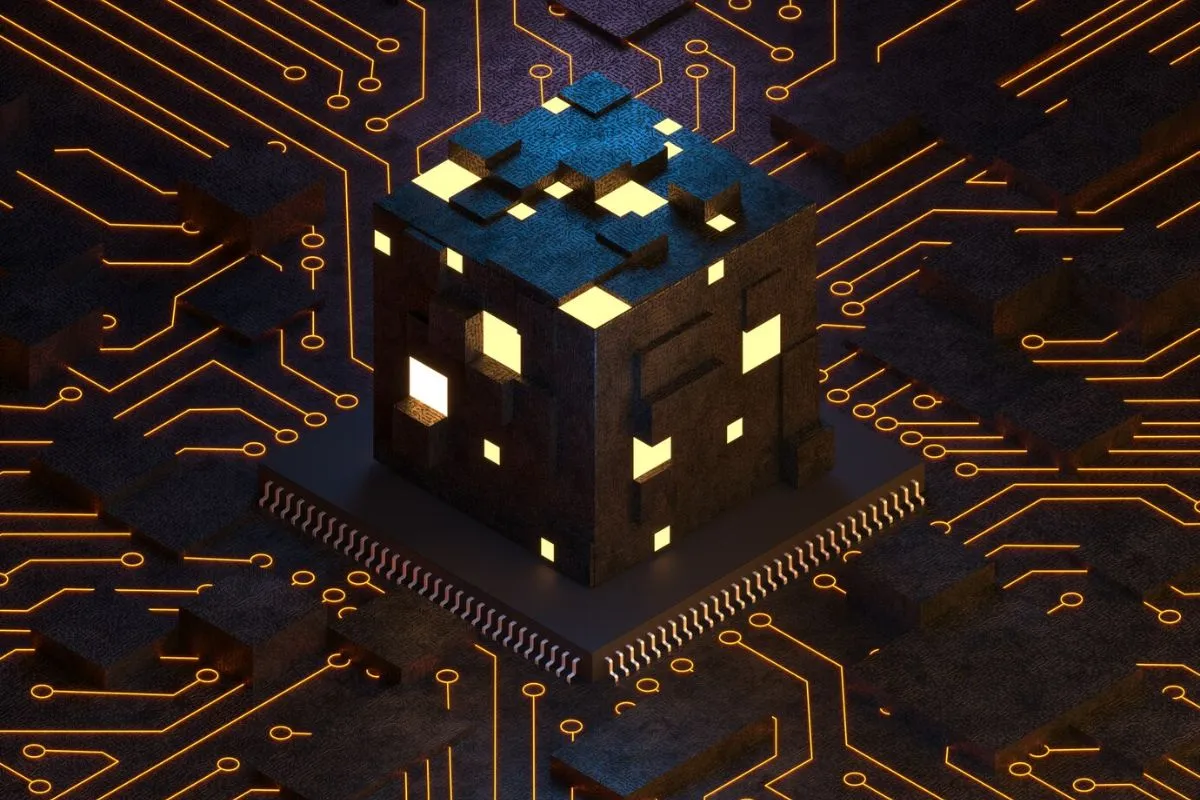Advanced Mathematics in Blockchain Technology Security is a crucial aspect of ensuring the safety and integrity of blockchain systems. This topic delves deeply into how mathematical theories and practices enhance blockchain technology, providing sophisticated security measures.
The use of Advanced Mathematics in blockchain technology enables the creation and implementation of robust encryption methods. It also ensures the authenticity and confidentiality of data transactions.
Blockchain’s innovative security protocols rely heavily on advanced algorithms and mathematical models. Understanding these concepts is essential for developing more secure blockchain environments.
Core Concepts in Advanced Mathematics in Blockchain Technology Security
The Role of Mathematics in Cryptography
Cryptography is a fundamental aspect of blockchain security. Advanced Mathematics in Blockchain Technology Security plays an integral role in developing cryptographic techniques. These techniques protect data integrity and privacy.
Mathematical concepts like number theory and algebra underpin cryptographic algorithms. They ensure that data exchanges are secure and resistant to breaches.
These algorithms include symmetric and asymmetric encryption. Symmetric uses the same key for encryption and decryption, while asymmetric uses a pair of keys.
Symmetric vs. Asymmetric Encryption
Symmetric encryption employs a single key for encrypting and decrypting data. This method is fast but risks key exposure. Examples include AES and DES.
Asymmetric encryption uses two keys: a public key for encryption and a private key for decryption. It’s more secure but slower. RSA and ECC are typical examples.
Combining both methods, hybrid encryption is often used to balance security and performance.
Importance of Hash Functions in Blockchain Security
Hash functions are another cornerstone of Blockchain technology security. A hash function takes an input and produces a fixed-size string of bytes.
These functions ensure data integrity by verifying that the data has not been altered. Popular examples include SHA-256 and MD5.
In blockchain, hash functions link blocks in a chain, enhancing security by making data tamper-evident.
How Hash Functions Work
A hash function takes input data and transforms it into a fixed-size output, known as a hash. Even a small change in input will significantly alter the hash.
This process ensures data integrity because any tampering with the data will be evident. Blockchain technology uses hash functions extensively to validate data blocks.
Efficient and secure, hash functions like SHA-256 play a critical role in maintaining blockchain security.
Public Key Infrastructure (PKI) in Blockchain Protocols
Public Key Infrastructure (PKI) is essential in managing digital keys used for secure communications within blockchain systems.
PKI is an effective Blockchain Security Measure. It involves issuing and managing digital certificates, enabling secure data exchanges.
Blockchain protocols such as SSL/TLS use PKI to authenticate and encrypt data between users, ensuring secure transactions.
Components of PKI
PKI includes components like Certificate Authorities (CAs), digital certificates, and public/private key pairs.
Certificate Authorities issue and verify digital certificates. These certificates link a public key to an identity, ensuring authenticity.
Public and private key pairs enable secure encrypted communication, vital for Blockchain Security Measures.
Applications of Advanced Mathematics in Blockchain Security
Ensuring Data Integrity in Blockchain
Ensuring data integrity is a primary objective of Advanced Mathematics in Blockchain Technology Security. Mathematical functions verify the authenticity and consistency of data.
Blockchain relies on immutability. This characteristic, achieved through advanced algorithms, prevents data tampering.
Mathematical models create secure, verifiable ledgers, essential for applications like financial services, supply chain management, and healthcare.
Techniques for Data Integrity
- Merkle Trees: Structures that efficiently summarize and verify large data sets.
- Cryptographic Hashes: Secure hashes to maintain data consistency.
- Digital Signatures: Verify the authenticity of data sources.
Enhancing Cybersecurity with Blockchain
Cybersecurity is a pressing concern addressed by Advanced Mathematics in Blockchain Technology Security. Blockchain’s decentralized nature makes it resistant to attacks.
By using encryption and consensus algorithms, blockchain creates secure transaction environments. It mitigates risks like data breaches and unauthorized access.
Advanced mathematical models continually evolve, improving blockchain’s overall cybersecurity posture.
Cybersecurity Applications
- Smart Contracts: Automate and secure contract execution.
- Decentralized Identity: Protect user identities through blockchain.
- Secure Voting Systems: Ensure integrity and transparency in elections.
Innovations in Blockchain-Based Encryption
Recent advancements in blockchain technology leverage sophisticated encryption techniques. These innovations address various security challenges.
Homomorphic encryption allows computations on encrypted data without decrypting it. This technique offers a new level of data security and privacy.
Quantum-resistant algorithms are being developed to safeguard blockchain against future quantum computing threats.
Advanced Encryption Methods
- Homomorphic Encryption: Enables computation on encrypted data.
- Zero-Knowledge Proofs: Verify data without revealing it.
- Quantum-Resistant Algorithms: Protect against quantum computing threats.
Challenges and Future Directions in Blockchain Security
Current Challenges in Blockchain Security
Despite its advantages, blockchain technology faces several security challenges. Issues include scalability, privacy, and regulatory compliance.
Scalability remains a significant hurdle. As blockchain networks grow, maintaining security without compromising performance is challenging.
Privacy is another concern. Balancing transparency with user confidentiality requires innovative mathematical solutions.
Overcoming Security Challenges
Advanced mathematical models can address these challenges. Techniques such as sharding enhance scalability.
Privacy-preserving algorithms, like zk-SNARKs, can ensure confidentiality while maintaining transparency.
Implementing adaptive and resilient security protocols will be essential for future blockchain systems.
Future Innovations in Blockchain Security
Future innovations in Advanced Mathematics in Blockchain Technology Security hold promise for more secure blockchain environments.
Developments like decentralized finance (DeFi) and non-fungible tokens (NFTs) require advanced security measures.
Quantum-resistant algorithms and machine learning will play a crucial role in enhancing blockchain security.
Areas of Innovation
- Quantum-Resistant Security: Prepare for future quantum threats.
- Machine Learning: Use AI to detect and mitigate security threats.
- Decentralized Finance: Secure financial transactions on blockchain.
Collaborative Efforts in Blockchain Security
Collaboration is vital for advancing Blockchain Technology Security. Researchers, developers, and industry leaders must work together.
Standardizing security protocols can ensure interoperability between different blockchain systems.
Open-source initiatives and shared knowledge foster innovation and enhance security measures.
Collaborative Strategies
Industry forums and consortiums facilitate the exchange of ideas. These platforms enable joint efforts to develop robust security standards and practices.
Academic research plays a critical role in discovering new mathematical techniques and algorithms. Collaborations with universities can bring theoretical advancements into practical applications.
Public-private partnerships also contribute to innovation. These partnerships can leverage governmental support for research and development in blockchain security.
Paving the Way Forward
Advanced Mathematics in Blockchain Technology Security is essential for robust and resilient blockchain systems. Cryptographic techniques, hash functions, and PKI are foundational elements.
Innovations in encryption and data integrity offer promising solutions to current security challenges. Future directions point towards quantum-resistant and AI-driven advancements.
Collaborative efforts will be crucial. Industry, academia, and government must work together to pave the way for secure blockchain technology.
For those keen on exploring the field further, participating in blockchain security forums and engaging with research communities is recommended. Your active involvement can drive the next wave of innovation.
Frequently Asked Questions
What is the role of advanced mathematics in blockchain technology security?
Advanced mathematics underpins critical cryptographic techniques, ensuring data integrity and privacy in blockchain systems.
How do hash functions improve blockchain security?
Hash functions create a fixed-size output from data, verifying integrity by making any tampering evident. They link blocks securely in a blockchain.
What are public key infrastructure (PKI) components?
PKI components include Certificate Authorities, digital certificates, and key pairs. These elements manage secure communications.
What are the current challenges in blockchain security?
Challenges include scalability, privacy, and regulatory compliance. Advanced mathematical models are required to address these issues.
What future innovations are expected in blockchain security?
Future innovations include quantum-resistant algorithms and AI integration for enhanced security. Collaborative efforts will be crucial.




